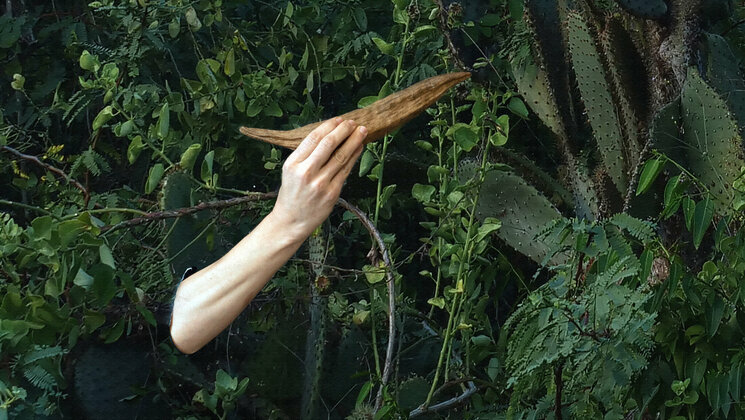-
Faculty of Arts and HumanitiesDean's Office, Faculty of Arts and HumanitiesJakobi 2, r 116-121 51005 Tartu linn, Tartu linn, Tartumaa EST0Institute of History and ArchaeologyJakobi 2 51005 Tartu linn, Tartu linn, Tartumaa EST0Institute of Estonian and General LinguisticsJakobi 2, IV korrus 51005 Tartu linn, Tartu linn, Tartumaa EST0Institute of Philosophy and SemioticsJakobi 2, III korrus, ruumid 302-337 51005 Tartu linn, Tartu linn, Tartumaa EST0Institute of Cultural ResearchÜlikooli 16 51003 Tartu linn, Tartu linn, Tartumaa EST0Institute of Foreign Languages and CulturesLossi 3 51003 Tartu linn, Tartu linn, Tartumaa EST0School of Theology and Religious StudiesÜlikooli 18 50090 Tartu linn, Tartu linn, Tartumaa EST0Viljandi Culture AcademyPosti 1 71004 Viljandi linn, Viljandimaa EST0Professors emeriti, Faculty of Arts and Humanities0Associate Professors emeriti, Faculty of Arts and Humanities0Faculty of Social SciencesDean's Office, Faculty of Social SciencesLossi 36 51003 Tartu linn, Tartu linn, Tartumaa EST0Institute of EducationJakobi 5 51005 Tartu linn, Tartu linn, Tartumaa EST0Johan Skytte Institute of Political StudiesLossi 36, ruum 301 51003 Tartu linn, Tartu linn, Tartumaa EST0School of Economics and Business AdministrationNarva mnt 18 51009 Tartu linn, Tartu linn, Tartumaa EST0Institute of PsychologyNäituse 2 50409 Tartu linn, Tartu linn, Tartumaa EST0School of LawNäituse 20 - 324 50409 Tartu linn, Tartu linn, Tartumaa EST0Institute of Social StudiesLossi 36 51003 Tartu linn, Tartu linn, Tartumaa EST0Narva CollegeRaekoja plats 2 20307 Narva linn, Ida-Virumaa EST0Pärnu CollegeRingi 35 80012 Pärnu linn, Pärnu linn, Pärnumaa EST0Professors emeriti, Faculty of Social Sciences0Associate Professors emeriti, Faculty of Social Sciences0Faculty of MedicineDean's Office, Faculty of MedicineRavila 19 50411 Tartu linn, Tartu linn, Tartumaa ESTInstitute of Biomedicine and Translational MedicineBiomeedikum, Ravila 19 50411 Tartu linn, Tartu linn, Tartumaa ESTInstitute of PharmacyNooruse 1 50411 Tartu linn, Tartu linn, Tartumaa ESTInstitute of DentistryL. Puusepa 1a 50406 Tartu linn, Tartu linn, Tartumaa ESTInstitute of Clinical MedicineL. Puusepa 8 50406 Tartu linn, Tartu linn, Tartumaa ESTInstitute of Family Medicine and Public HealthRavila 19 50411 Tartu linn, Tartu linn, Tartumaa ESTInstitute of Sport Sciences and PhysiotherapyUjula 4 51008 Tartu linn, Tartu linn, Tartumaa ESTProfessors emeriti, Faculty of Medicine0Associate Professors emeriti, Faculty of Medicine0Faculty of Science and TechnologyDean's Office, Faculty of Science and TechnologyVanemuise 46 - 208 51003 Tartu linn, Tartu linn, Tartumaa ESTInstitute of Computer ScienceNarva mnt 18 51009 Tartu linn, Tartu linn, Tartumaa ESTInstitute of GenomicsRiia 23b/2 51010 Tartu linn, Tartu linn, Tartumaa ESTEstonian Marine Institute0Institute of PhysicsInstitute of ChemistryRavila 14a 50411 Tartu linn, Tartu linn, Tartumaa EST0Institute of Mathematics and StatisticsNarva mnt 18 51009 Tartu linn, Tartu linn, Tartumaa EST0Institute of Molecular and Cell BiologyRiia 23, 23b - 134 51010 Tartu linn, Tartu linn, Tartumaa ESTTartu ObservatoryObservatooriumi 1 61602 Tõravere alevik, Nõo vald, Tartumaa EST0Institute of TechnologyNooruse 1 50411 Tartu linn, Tartu linn, Tartumaa ESTInstitute of Ecology and Earth SciencesJ. Liivi tn 2 50409 Tartu linn, Tartu linn, Tartumaa ESTProfessors emeriti, Faculty of Science and Technology0Associate Professors emeriti, Faculty of Science and Technology0Institute of BioengineeringArea of Academic SecretaryHuman Resources OfficeUppsala 6, Lossi 36 51003 Tartu linn, Tartu linn, Tartumaa EST0Area of Head of FinanceFinance Office0Area of Director of AdministrationInformation Technology Office0Administrative OfficeÜlikooli 17 (III korrus) 51005 Tartu linn, Tartu linn, Tartumaa EST0Estates Office0Marketing and Communication OfficeÜlikooli 18, ruumid 102, 104, 209, 210 50090 Tartu linn, Tartu linn, Tartumaa EST0Area of RectorRector's Strategy OfficeInternal Audit OfficeArea of Vice Rector for Academic AffairsOffice of Academic Affairs0University of Tartu Youth AcademyUppsala 10 51003 Tartu linn, Tartu linn, Tartumaa EST0Student Union OfficeÜlikooli 18b 51005 Tartu linn, Tartu linn, Tartumaa EST0Centre for Learning and TeachingArea of Vice Rector for ResearchUniversity of Tartu LibraryW. Struve 1 50091 Tartu linn, Tartu linn, Tartumaa EST0Grant OfficeArea of Vice Rector for DevelopmentCentre for Entrepreneurship and InnovationNarva mnt 18 51009 Tartu linn, Tartu linn, Tartumaa EST0University of Tartu Natural History Museum and Botanical GardenVanemuise 46 51003 Tartu linn, Tartu linn, Tartumaa EST0International Cooperation and Protocol Office0University of Tartu MuseumLossi 25 51003 Tartu linn, Tartu linn, Tartumaa EST0
Conference "Traces of Extinction: Species Loss, Solastalgia, and Semiotics of Recovery"

The sixth mass species extinction is one of the greatest ecological threats of our time. This conference focuses on cultural, subjective and semiotic approaches to extinction. A subjective approach to extinction may raise the question of how we experience extinction in the shared lifeworld or semiosphere. At the same time, artistic research seems to open fresh perspectives in combining cultural creativity with environmental decline. Extinction also reduces biocultural diversity and the resilience of ecocultures. By taking a perspective through naturecultures and cultural-ecological systems, we treat extinction as the degradation of such combined systems.
This perspective raises questions about cultural strategies that are effective in adapting to extinction, supporting endangered species, and overcoming trauma:
How is extinction perceived subjectively, both from the point of view of the dying species and the humans who witness it?
What cultural strategies can be used to raise awareness of extinction?
What means do individuals and communities have for reducing and avoiding species extinction?
Keynote speakers:
David B. Rothenberg (New Jersey Institute of Technology, USA)
Sonic Species Memory
Extinction in a world beyond mechanical reproduction
Someday soon everything may be saved as media while nothing in the wild survives. Let’s hope it doesn’t get that bad, but there are plenty of images and sounds saved of creatures that no longer walk this Earth or fly in these skies. Musicians and artists can easily make music together with these ‘extinct’ sounds. What happens when we conjure to life the solastalgic music of beings that no longer exist? Can such reconstitution of the missing help us save the nature that remains? With listening and exploring, let’s see if we can find out.
Linda Knight (RMIT University, Australia)
Mapping the multispecies cosmopolitics of extinction
Contemporary discourses on extinction pinpoint factors such as biodiversity loss, ecological breakdown, end times, ecocide, as well as conservation, cloning and cryogenics. Given the rich detail of this research, what can art practice bring to the subject of extinction, and how might artistic explorations be both a practice of investigation and learning as well as a mode for commentary and dissemination?
Further information can be found on the conference website
The conference is organised by the Department of Semiotics, University of Tartu in cooperation with Cost Action “CA20134 - Traces as Research Agenda for Climate Change, Technology Studies, and Social Justice (TRACTS) and Nordic-Baltic Transdisciplinary Research-Creation Network.
The conference is funded by the Estonian Research Council’s grant PRG1504 “Meanings of endangered species in culture: ecology, semiotic modelling and reception.” Conference is part of the Creative Nature Festival programme organized by University of Tartu Natural History Museum and Botanical Garden and partners. The festival belongs to the European Capital of Culture Tartu 2024 programme and is supported by SA Tartu 2024.

Conference "Traces of Extinction: Species Loss, Solastalgia, and Semiotics of Recovery"
Read more similar news





